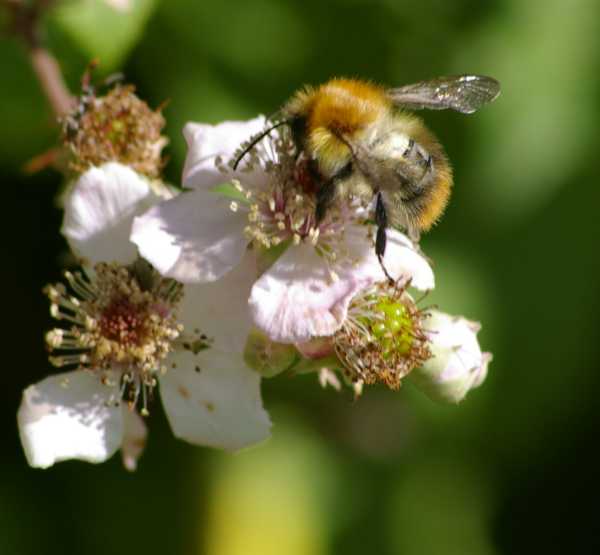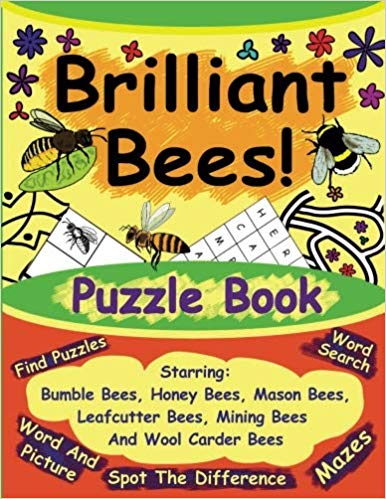Do Bees Have A Brain?
Question:
Do bees have brains?
The short answer is:
Yes – bees have brains. All
types of bees have brains (honey bees, bumble bees, carpenter bees and all other solitary bee species).
We'll answer this question in more detail about the brains of bees, but first...
3 Interesting Facts About Bee Brains
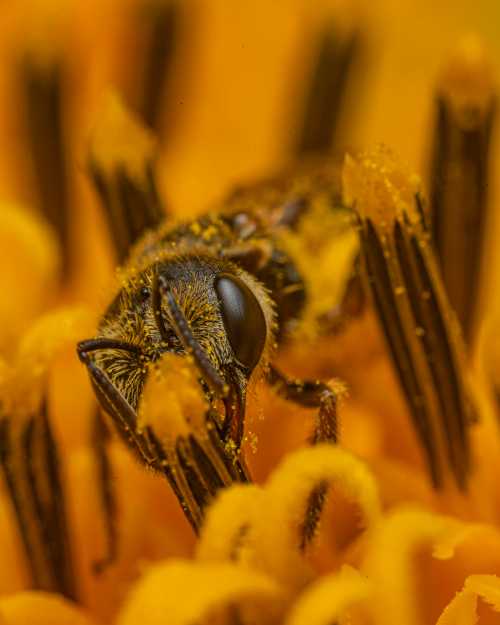 Photograph, with thanks to Isaias Sanchez
Photograph, with thanks to Isaias Sanchez1. Bees are pretty smart, and scientists have found that, not only can they be trained to detect diseases and sniff out bombs, they can also find their way out of a maze, and can recognise and remember human faces, learn concepts like 'same' and 'different' – and more.
You can read about this on my page, Are Bees Smart?
2. Bee
brains are actually large compared to those of other insects. For example, the brain of the fruit fly (Drosophila)
is 50 times smaller than that of the honey bee. The brain of the honey bee also has more sophisticated 'mushroom bodies', which aid the bee with memory and senses.
3. Researchers at Imperial College in London scanned bumble bee brains and found that bumble bee brains are less than 2 cubic millimetres (in volume) – less than 0.0002% of the size of the average human brain!
What does a bee brain look like?
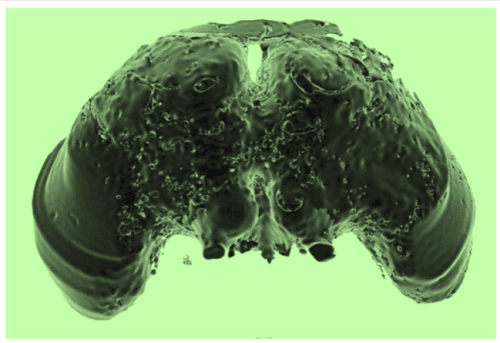 The brain of a bee
The brain of a beeImage after Smith, D., Bernhardt, G., Raine, N. et al. Exploring miniature insect brains using micro-CT scanning techniques. Sci Rep 6, 21768 (2016).
In an adult bee there are seven ganglia which are collections of nerves which lie along the mid-line of the body: two in the head, two in the thorax, and three in the abdomen. It is the two in the head that we need to concentrate on now.
Why? Because one of them is actually referred to as ‘the brain’.
The ganglion referred to as the brain in bees is formed by the merger of three embryonic lobes – that is to say, when the bee larva is developing, there are three ganglia that merge to form the one brain ganglion of the adult.
What does the bee brain control?
Nerves from the brain go to three important anatomical locations: the eyes; the antennae; the mouth parts.
Are there differences in the sizes of the brains of different bee species?
Are bees with larger brains more intelligent?
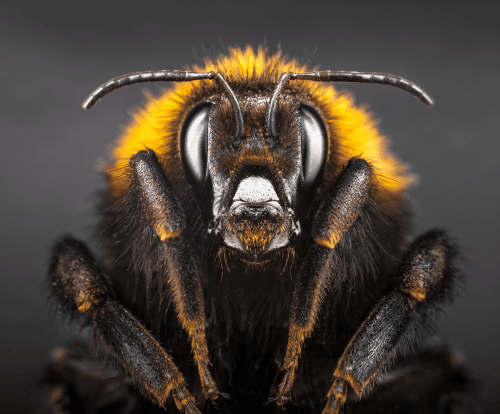
Research has suggested that
amongst bumble bees (which have a significant size variation) the larger
specimens are more efficient foragers and better learners than smaller
specimens of the same species.
However, this does not necessarily mean that a large bumble bee is more intelligent than say, an adult worker honey bee.
Which bee has the largest brain?
You can read more about this, plus more information about where honey bees, bumble bees and leafcutters are ranked on my page How Big Is A Bee Brain?
How are bee brains different from human brains (apart from the obvious difference of size)?
Bees may be small, but they are like other animals in that they are still complex creatures made up of a number of different tissues that all perform their own specialised function, but are all integrated to ensure the normal functioning of the entire body.
As in larger animals, the efficient functioning of the body of bees is managed by the nervous system. However, the bee nervous system is anatomically quite different from that of ‘higher’ animals such as humans.
In humans, the nervous system consists of the brain (a large collection of nerves), which is situated in the head, and the nerves that run from it: the spinal cord, which passes down the spinal column), and the peripheral nerves – some of which branch off the spinal cord.
In bees, however, the arrangement is a different one, as explained above. The nervous system of bees is much simpler, consisting of a series of small collections of nerves (these are known as ganglia, as referred to above).
The ganglia lie along the mid-line of the body. Each ganglion is connected to the next by two cords – the commissures. There are nerve branches that go to the other parts of the body.
In effect, the ganglia are like the human brain, with the commissures and nerve branches being like the spinal cord and peripheral nerves in humans. Clearly, in humans, all the functions of the brain are gathered into one location – the brain in the head; whereas in bees, some of the ‘brain functions’ that would operate from the head in humans, are separated into different locations within the body.
Therefore,
of the seven ganglia in the adult bee body, two are in the head (as previously
stated), two in the thorax, and three are in the abdomen.
Resources:
- Devaud et al, 2015. Neural substrate for higher-order learning in an insect: Mushroom bodies are necessary for configural discriminations. Proceedings of the National Academy of Sciences. doi: 10.1073/pnas.1508422112.
- Snodgrass
R.E., The Anatomy of the Honey Bee. U.S
Department of Agriculture 1910.
- Dunning H. Bee brains as you have never seen them before. Imperial College, London, 2016.
- Lieff J. The Remarkable Bee Brain, 2012.
- Galizia, C. et al. Honeybee
Neurobiology and Behavior Honeybee Neurobiology and Behavior A Tribute to
Randolf Menzel (pp.125-140) Chapter: 3.1 Publisher: Springer.
- Aurore
Avarguès-Weber and Martin Giurfa. "Conceptual learning by miniature
brains." Proceedings of the Royal Society B, 280: 20131907.
- Mares S, Ash L, Gronenberg W. Brain allometry in bumblebee and honey bee workers. Brain Behav Evol. 2005;66(1):50-61. doi: 10.1159/000085047. Epub 2005 Apr 8. PMID: 15821348.
If you found this page helpful or interesting, I'd really be grateful if you would share it with others - if not this page, perhaps another, such as Gardening For Bees.
Thank you so much :) .
